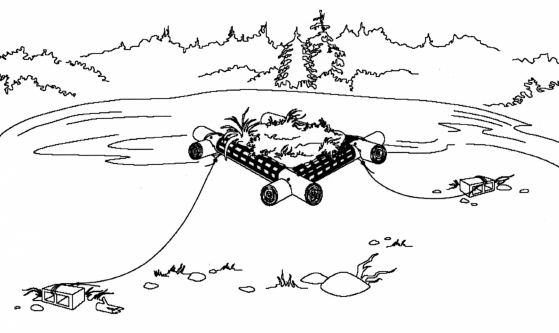Spring Raft Floating
Each year, LPC staff and volunteers float over 150 Common Loon nest rafts throughout New Hampshire. Roughly 1/3 of these rafts are floated by volunteers. The guidelines below are intended to help volunteers who float rafts ensure that the rafts are placed in suitable locations and are anchored properly. If you have questions or concerns about floating your raft, or if you need replacement materials, please email field@loon.org or call us at (603)476-5666. Thank you for your help!
When and Where to Float your Nest Raft
Rafts may be floated any time after ice out—the earlier the better. All rafts should be floated by mid-May at absolute latest and should be placed in areas that are protected from prevailing winds and wave action. Rafts must be placed in areas where they will not impede safe navigation by boats. Quiet coves are ideal. Within these protected areas, rafts should be 10–50 feet from shore, depending on level of exposure to wind and human activity. Ideally, rafts should be floated in areas that are 2-10 feet in depth. In the first year that a raft is floated, LPC biologists will work with volunteers to choose a suitable location for the raft. We ask to be included in any discussions about changing the location of rafts. If you are unable to float your raft by mid-May, please be in touch with LPC at field@loon.org or (603)476-5666.
Rafts must have a minimum of two anchors, placed on opposite corners. LPC constructs rafts with loops of stainless steel wire rope on the corners—these are the attachment point for anchors. Anchors should be fastened to the wire rope using stainless steel locking carabiners. Spring snap carabiners are not ideal, as they detach more easily. When floating rafts, drop the anchors at a 45 degree angle from the raft, leaving some slack in lines to allow for fluctuations in water levels. Too much slack could cause the raft to move too much in heavy winds.The diagram to the right shows proper raft anchor deployment.

What We Do
About LPC

